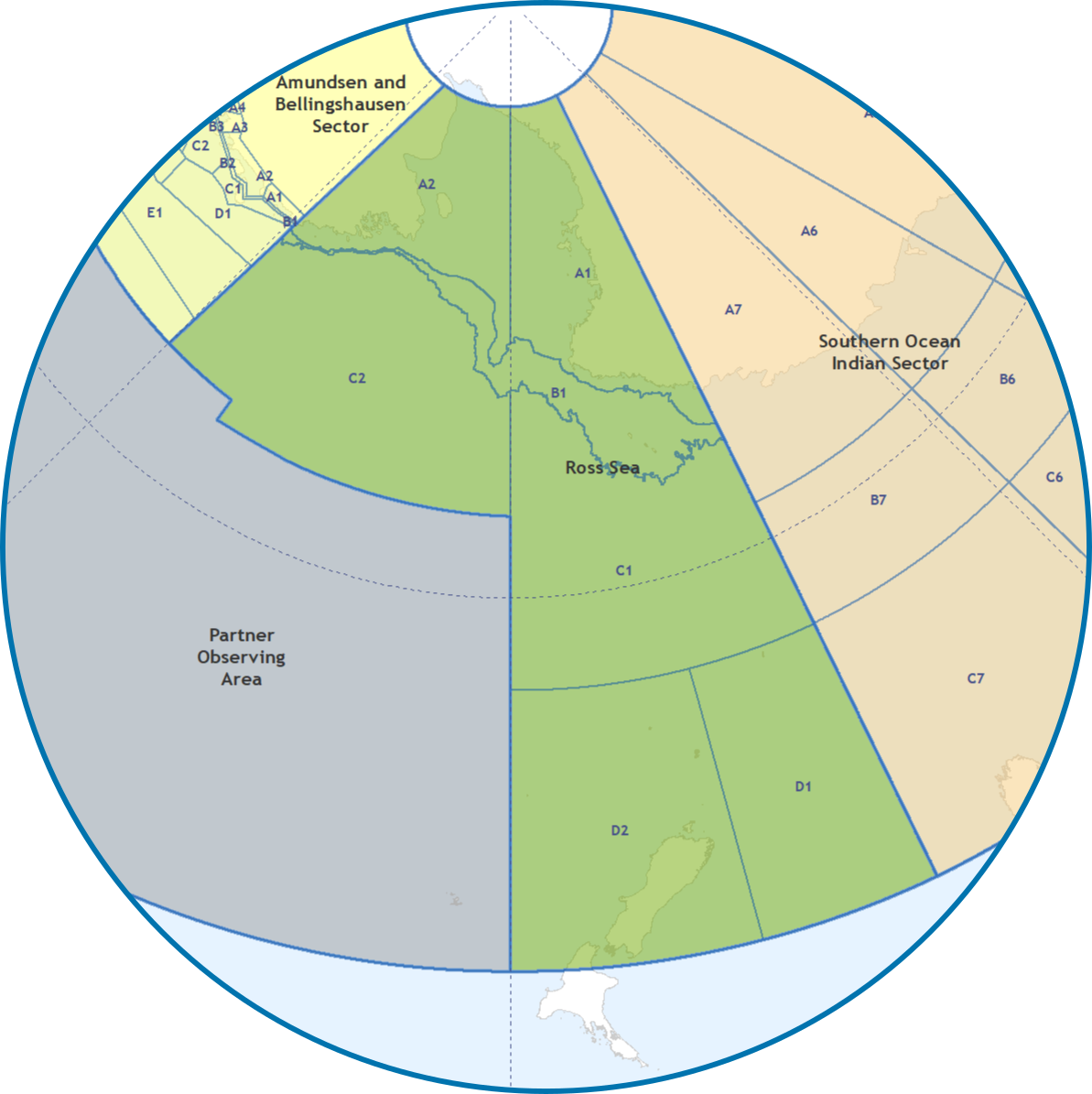Ross Sea
Regional Working Group

The Ross Sea region is the site for production of AABW formation, for the largest primary productivity in the Southern Ocean, and the location of the world’s largest marine protected area. It is characterised by significant amounts of export from the surface layer to depth and massive accumulations of higher trophic levels (e.g., whales, penguins, seals, birds). Moreover, the Ross Sea shelf area is an important CO2 sink due to its high biological productivity, intense winds, and high bottom water ventilation rates. Observing efforts are focused on understanding the complex interactions among physical factors in driving changes in ice distributions, understanding the energy and material transfer within the food web, and the role of trace metals in governing the primary production.
The Ross Sea Regional Working Group will assist delivery of coordinated and, where possible, standardised observations of essential physical, chemical and biological variables in the Ross Sea in support of SOOS.
The working group is open for involvement to anyone working in the Ross Sea region. Click the button below to receive updates and further relevant information about the SOOS Ross Sea Regional Working Group.

-
Develop and enable regional-scale observing in the Ross Sea using SOOS best practice for observing system in the region.
-
Identify and assemble legacy data sets and sampling techniques of ships and stations in the Ross Sea in order to provide best practice sampling protocols for physical, chemical and biological parameters to enable their standardization. Sampling approaches and recommendations will be made available on the SOOS Website.
-
Based on understanding of existing efforts in the Ross Sea, identify gaps and bottlenecks in the observation systems and contribute to SOOS in addressing these issues. Facilitate coordinated and, where possible, multi-disciplinary (physical, chemical and biological) observations of the Ross Sea. Plans, operations and meta-data will be made available on the SOOS web site to help collaboration amongst the international community.
-
Facilitate and, when needed, develop procedures to achieve efficient sharing of data across the science community according to SOOS data policy.
-
Convene focussed sessions at national and international meetings, including SCAR and SCOR, and facilitate synthesis products, to increase the awareness of the science community to the importance of the Ross Sea.
-
Provide support to International Program Office (IPO) by providing annual reports to be available at the SOOS SSC annual meeting, as well as providing content for the IPO website/newsletters on the activities and outcomes of the Ross Sea Working Group.
-
Develop a funding plan to sustain Working Group activities.
-
Have products coming out of the WG acknowledge SOOS.
-
Contribute to international initiatives assessing the state of the Southern Ocean.






